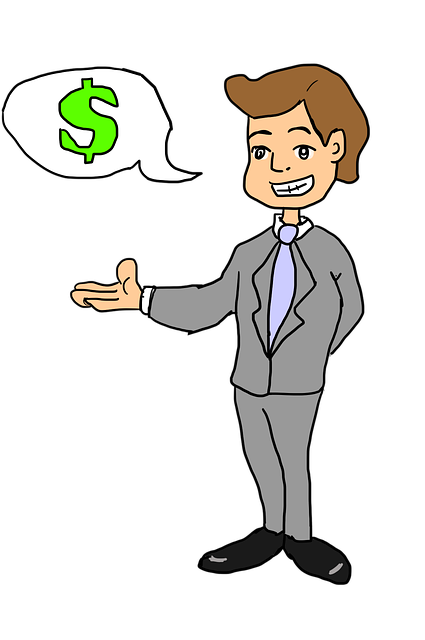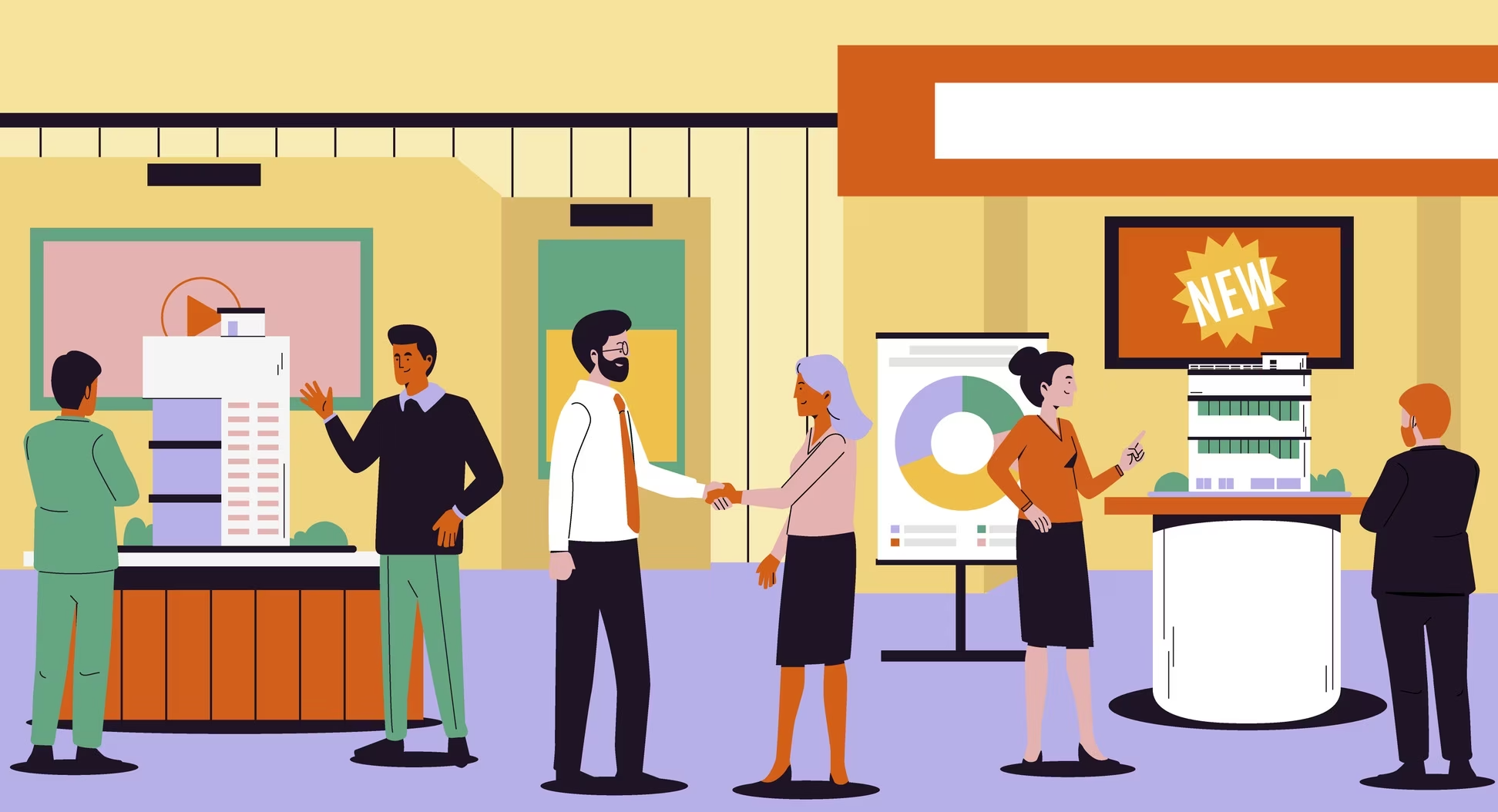Are you torn between inside sales and outside sales? Wondering which approach is right for your business? Look no further.
In this article, we’ll dive deep into the world of Inside Sales vs. Outside Sales, breaking down the key differences and similarities between these two strategies.
You’ll gain a comprehensive understanding of the skills required for each role, and the different sales models involved, and even discover whether outsourcing your inside sales team is a viable option.
So buckle up and get ready to make an informed decision that will drive your sales success.
Table of Contents
- Key Takeaways
- Inside and Outside Sales Reps Need Different Skills
- Inside vs. Outside Sales Models For a Sales Rep
- Inside Sales Rep vs. Outside Sales Rep Quota Attainment
- Should You Outsource Your Inside Sales Team?
- Key Differences Between Inside and Outside Sales
- Inside Sales Vs. Outside Sales Team Structure
- What Do Inside Sales Reps Do?
- What Do Outside Sales Reps Do?
- Inside vs. Outside Sales Salary Differences
- Tools Used in the Inside Vs. Outside Sales Process
- Which Sales Strategy Is Right For Your Business
- Should You Use Inside or Outside Sales?
- Frequently Asked Questions
- What Are the Key Differences in the Skills Required for Inside Sales Reps and Outside Sales Reps?
- How Do Inside and Outside Sales Models Differ in Terms of Their Approach and Effectiveness?
- What Factors Contribute to Quota Attainment in Inside Sales Versus Outside Sales?
- When Should a Company Consider Outsourcing Their Inside Sales Team?
- What Are the Main Factors to Consider When Deciding Between Using Inside Sales or Outside Sales for Your Business?
- Conclusion
Key Takeaways
- Inside sales refers to remote selling via phone, email, and digital channels, while outside sales involves face-to-face meetings and travel.
- Inside sales reps focus on guiding potential customers through the sales process, building relationships, and closing deals with monthly quota goals.
- Inside sales reps leverage various tools like phones, email, video, and virtual meetings to connect with potential customers and demonstrate superior product knowledge.
- Key roles in an inside sales team include Sales Development Representative (SDR), Account Executive (AE), Account Manager, and Customer Success Manager.

Inside and Outside Sales Reps Need Different Skills
You need to understand that inside sales reps and outside sales reps require different skills to excel in their respective roles.
Inside sales reps focus on remote selling through phone calls, emails, and digital channels. They rely on their strong communication skills and the ability to build relationships virtually.
On the other hand, outside sales reps travel and have face-to-face meetings with clients. They need excellent interpersonal skills and the ability to adapt to different environments.
Both inside and outside sales reps possess essential sales skills such as product knowledge, negotiation abilities, and closing deals. However, inside sales reps excel at guiding customers through the sales process remotely, while outside sales reps thrive in building personal connections during in-person interactions.
Understanding these differences is crucial for optimizing your team’s inside and outside sales performance.
Looking to master the dynamics of Inside vs. Outside Sales? Darren, CEO of Rampd, brings a wealth of experience to demystify the nuances of both sales models. Equip your team with the knowledge to navigate the sales landscape effectively. Schedule a session with Darren today and elevate your sales strategy to unparalleled success.

Inside vs. Outside Sales Models For a Sales Rep
The sales model choice depends on your customer preferences and ability to close deals over the phone. When considering inside sales vs. outside sales, it’s important to understand the different sales models and how they can benefit your business.
Here are four key points to consider:
- Inside Sales Model: This model involves connecting with prospects, leads, and clients using digital channels such as phone calls, email, and social media. It focuses on acquiring leads quickly, with a shorter sales cycle of around 90 days. Inside sales teams are cost-effective and scalable, utilizing digital platforms for sales interactions.
- Outside Sales Model: This model requires traveling to meet clients face-to-face. It emphasizes nurturing and converting leads with a slower sales cycle of around 90 days. While it costs more and is less scalable than inside sales, it offers a personalized experience through in-person meetings.
- Customer Preferences: The choice between inside and outside sales depends on customer preferences. Some may prefer the convenience of digital interactions, while others value the personal touch of face-to-face meetings.
- Adaptability: With the growing digital savviness of buyers, having an effective inside sales team is crucial for meeting their expectations. Companies are experimenting with different sales models and organizational structures to adapt to changing market dynamics.
Ultimately, understanding customer preferences and adapting your approach accordingly will help you decide which sales model is best for your business’s success.

Inside Sales Rep vs. Outside Sales Rep Quota Attainment
Consider how quota attainment differs between inside and outside sales when comparing the sales models.
Inside and outside sales representatives have targets to meet, but their methods to achieve those quotas can vary.
Inside sales reps leverage digital channels like phone calls, email, and videoconferencing to connect with potential customers. They can reach a larger volume of leads within a shorter timeframe.
On the other hand, outside sales reps rely on face-to-face meetings to build relationships and close deals. While their approach may take longer due to travel time, they often have higher average deal sizes.
Both inside and outside sales reps play a crucial role in meeting company quotas and driving revenue growth.

Should You Outsource Your Inside Sales Team?
Consider whether outsourcing your inside sales team is a strategic option for your business. Here are four key points to help you make an informed decision:
- Cost Efficiency: Outsourcing your inside sales team can be more cost-effective than maintaining an in-house team. You can save on overhead costs such as office space, equipment, and employee benefits.
- Expertise and Scalability: Outsourcing gives you access to a pool of experienced inside sales professionals who generate leads and close deals. Additionally, outsourcing allows for scalability, as you can easily ramp up or down the size of your sales team based on business needs.
- Focus on Core Competencies: Outsourcing frees up your internal resources to focus on core competencies and strategic initiatives that drive growth for your business.
- Face-to-Face Interactions: While outside sales teams excel at face-to-face interactions, many inside sales professionals are adept at building relationships remotely through phone calls, emails, video conferencing, and other digital channels.

Key Differences Between Inside and Outside Sales
To understand the key differences between inside and outside sales, it is important to consider customer interactions, travel requirements, and personalization factors.
Inside sales and outside sales represent two distinct models of selling. Inside sales reps typically work remotely, using phone calls, emails, and digital channels to connect with prospects. They focus on building relationships, demonstrating product knowledge, and closing deals without needing in-person meetings.
On the other hand, outside sales reps travel extensively to meet prospects face-to-face. This allows for a more personalized sales experience and deeper relationship-building opportunities. Outside sales reps rely on in-person meetings to nurture leads and convert them into customers.
Understanding these differences is crucial when determining which model aligns best with your business goals and customer preferences.

Inside Sales Vs. Outside Sales Team Structure
The structure of a sales team can vary depending on whether it is focused on inside or outside sales. Here are four key points to consider when it comes to the team structure:
Inside Sales Teams:
- Inside sales teams primarily work remotely, leveraging phone calls, email, and digital channels to connect with potential customers.
- Key roles within an inside sales team include Sales Development Representatives (SDRs), Account Executives (AEs), Account Managers, and Customer Success Managers.
- Startups and small businesses often benefit from inside sales teams as they help decrease overhead costs.
- Outsourcing an inside sales team can be effective if the vendor understands the brand, product, and messaging.
Outside Sales Teams:
- Outside sales teams involve face-to-face meetings with clients and prospects.
- These reps travel to meet their customers in person and provide a personalized sales experience.
- A larger budget is needed for outside sales due to travel expenses, but they often reach higher Average Contract Values (ACVs) and quotas.
- The global pandemic has impacted this approach, leading to a shift towards digital strategies.
Understanding the differences between inside and outside sales teams will help determine which structure best aligns with your business goals and customer needs.
Ready to dive deep into the world of Inside and Outside Sales? Explore Rampd’s unique insights that transcend traditional sales advice. Our proven methodologies have transformed sales teams, leading to significant revenue boosts. If you aim to optimize your sales approach and understand the core differences between the two models, connect with Darren, CEO of Rampd, now.

What Do Inside Sales Reps Do?
Inside sales reps guide potential customers through sales by demonstrating their extensive product knowledge, building strong relationships, nurturing leads, and ultimately closing deals.
These highly skilled sales reps are your trusted advisors, providing you with all the information you need to make an informed purchasing decision. They understand the ins and outs of your specific needs and can tailor their approach to meet your unique requirements.
Whether it’s answering your questions, addressing any concerns you may have, or offering personalized recommendations, inside sales reps are dedicated to ensuring your satisfaction.
They are an essential part of sales teams that strive to deliver exceptional customer experiences at every stage of the buying journey. Trust them to provide the guidance and support you need to make confident decisions in today’s competitive marketplace.

What Do Outside Sales Reps Do?
Discover the responsibilities and activities of outside sales reps as you travel, meet clients face-to-face, and build personal relationships to nurture and convert leads.
Here are four key aspects of what outside sales professionals do:
- Building Personal Relationships: As an outside sales rep, your main focus is on establishing strong connections with clients. By meeting them in person, you can create a sense of trust and rapport that is crucial for nurturing leads and converting them into customers.
- Traveling: Being on the move is integral to your role as an outside sales professional. You will visit various locations to meet with potential clients, attend industry events, and explore new opportunities. This allows you to expand your network and reach a wider audience.
- Nurturing Leads: Outside sales reps guide prospects through the buyer’s journey. This involves providing personalized support, answering questions, addressing concerns, and offering solutions that align with their needs. Your goal is to foster long-term relationships by consistently delivering value.
- Converting Leads: Ultimately, your aim as an outside sales representative is to close deals and generate revenue for your organization. By effectively communicating the benefits of your products or services in face-to-face meetings, you can persuade potential customers to make a purchase.
As an outside sales rep, you drive business growth by leveraging personal interactions to nurture leads and convert them into loyal customers.

Inside vs. Outside Sales Salary Differences
Navigating the sales industry often encounters the terms ‘inside sales’ and ‘outside sales’. While both roles are crucial in building relationships and closing deals, there are distinct differences in their responsibilities, sales strategies, and, notably, their salary structures.
Inside Sales Salaries
Inside sales reps primarily operate from an office or remote location, leveraging digital channels, phone calls, and modern sales tools. Their responsibilities often include cold calling, managing the sales pipeline, and nurturing qualified leads through digital means. Given their office-bound nature, inside sales reps tend to have a fixed salary with potential bonuses or commissions. For example, an inside sales representative in the tech industry might earn a base salary of $50,000 with added commissions based on sales quota attainment.
Outside Sales Salaries
On the other hand, sales reps are the field warriors. They engage in face-to-face meetings, attend trade shows, and often travel to meet potential clients or existing customers. Their sales process involves in-person interactions, understanding client pain points firsthand, and offering tailored solutions. Due to the nature of their job, outside sales representatives often have a more variable compensation structure. They might have a lower base salary, say $40,000, but with higher commissions and allowances, their total earnings could exceed that of inside sales agents, especially if they consistently meet or surpass their sales goals.
While inside sales jobs might offer more stability in terms of a fixed salary, outside sales positions often present the opportunity for higher earnings through commissions, especially for those adept at face-to-face sales and building long-term business relationships.
Remember, the exact salary differences can vary based on the industry, region, and company size. It’s essential to consider all factors when evaluating a sales position.

Tools Used in the Inside Vs. Outside Sales Process
Explore the various tools you can utilize in both inside and outside sales processes to streamline your workflow and enhance productivity. In today’s competitive market, using tools is essential for success.
For both inside and outside sales, a range of tools are available to help you make sales calls, close deals, manage customer relationships, and improve overall efficiency.
One key tool for both inside and outside sales is customer relationship management (CRM) software. This tool lets you track leads, manage contacts, and effectively communicate with customers. With CRM software, you can stay organized and ensure that no opportunities slip through the cracks.
Check out Salesforce, HubSpot, and ClickUp.
In addition to CRM software, phone calls are crucial for both inside and outside sales reps. Whether it’s making cold calls or following up with warm leads, phone calls allow you to connect directly with potential customers and build rapport.
You should also consider having a sales script ready. Both inside sales and outside sales reps will be faced with customers who have excuses not to buy from you. A script with canned responses to the most popular objections will go a long to turning more “no’s” into “yes’s.”
Consider using automation tools such as email templates or automated follow-up sequences to streamline your workflow further. These tools can save time by automating repetitive tasks while still allowing for personalization in your communication.
Utilizing these tools will enhance your productivity and improve your ability to close deals and build strong customer relationships.

Which Sales Strategy Is Right For Your Business
To determine the right sales strategy for your business, consider factors such as target customers, product complexity, and budget constraints. Here are four key points to help you make an informed decision:
- Understand the differences: Inside sales focuses on remote selling through phone, email, and digital channels, while outside sales involves face-to-face meetings with clients. Knowing these distinctions will help you align your strategy with your business goals.
- Evaluate potential customers: Consider the preferences and needs of your target audience. Outside sales may be more effective if they prefer personalized interactions or have complex purchasing decisions. Alternatively, inside sales could be better if they are tech-savvy and appreciate convenience.
- Assess team structure: Determine whether your current sales team is equipped for inside or outside sales based on their strengths and expertise. Sales managers should establish clear roles and responsibilities to maximize efficiency.
- Budget considerations: Analyze your financial resources to determine which approach is more cost-effective for your business. Outside sales often require higher travel expenses compared to inside sales.
Should You Use Inside or Outside Sales?
One factor to consider when deciding between inside and outside sales is the preferred level of personalization in customer interactions.
Inside sales, which focuses on remote selling through phone, email, and digital channels, allows for a high degree of personalization through targeted messaging and tailored communication.
On the other hand, outside sales involve face-to-face meetings with customers, providing a more personalized sales experience.
Regarding sales strategy and goals, inside sales teams often have monthly quota goals and are responsible for closing deals with existing customers.
Outside sales reps, however, may focus on nurturing leads and converting them into long-term clients.
Ultimately, the choice between inside and outside sales depends on your target audience’s preferences and the level of personalization you want to offer in your customer interactions.

Frequently Asked Questions
What Are the Key Differences in the Skills Required for Inside Sales Reps and Outside Sales Reps?
The key differences in the skills required for inside sales reps and outside sales reps are like night and day. Inside sales reps excel at remote communication, building relationships, and nurturing leads, while outside sales reps thrive in face-to-face interactions and adaptability.
How Do Inside and Outside Sales Models Differ in Terms of Their Approach and Effectiveness?
The inside and outside sales models differ in approach and effectiveness. Inside sales leverage technology to connect with customers remotely, while outside sales focus on face-to-face interactions. The choice depends on customer preferences and the nature of the product or service.
What Factors Contribute to Quota Attainment in Inside Sales Versus Outside Sales?
Factors contributing to quota attainment in inside sales vs. outside sales include utilizing digital tools and communication channels effectively, adapting to changing market dynamics and prioritizing the number of leads for inside sales reps.
When Should a Company Consider Outsourcing Their Inside Sales Team?
When considering outsourcing your inside sales team, evaluate factors like cost-effectiveness, vendor expertise in your brand and product, and alignment with your messaging. Outsourcing can be effective for startups or when reducing overhead costs is a priority.
What Are the Main Factors to Consider When Deciding Between Using Inside Sales or Outside Sales for Your Business?
When deciding between inside sales and outside sales for your business, consider factors like target customers, product complexity, budget, and market trends. Which approach aligns best with your goals?
Conclusion
Based on the information provided, it is clear that both inside sales and outside sales have their own unique advantages and characteristics. Inside sales allow for a more remote and predictable approach, while outside sales provide a personalized and face-to-face experience.
However, in today’s digital age, the line between these two approaches is becoming blurred as companies adopt hybrid strategies.
Ultimately, the choice of sales model depends on customer preferences and the nature of the product or service being sold.
So, whether you choose to go inside or outside, remember that success lies in understanding your customers’ needs and building strong relationships with them – like a skilled artist painting a masterpiece.
Boost your sales prowess with the expert insights of Darren, Rampd’s CEO. Whether you’re aiming to refine your inside sales techniques, enhance your outside sales strategies, or simply understand the key distinctions, Darren’s in-depth consultation promises clarity. Don’t let sales myths confuse you—reach out to Darren today and unlock the true potential of your sales team.



